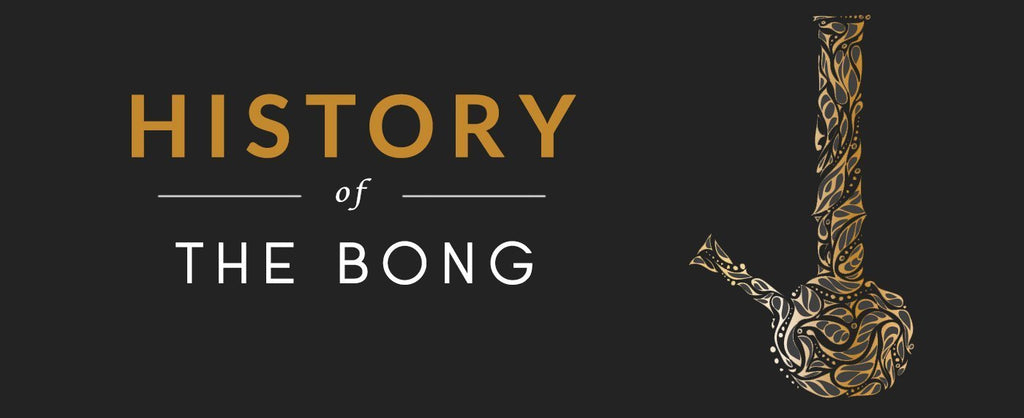History of the Bong

Many people believe the water pipe was a fancy upgrade to rolled cigarettes that were invented during the hippie era. While glass water pipes certainly gained popularity in the Western world during that time, bong history actually has roots that go back long before the Vietnam War or even the founding of Vietnam itself.
So who made the first bong? Current discoveries have dated the earliest found water pipe at roughly 2,400 years ago, which were solid gold and used by Scythian tribal chiefs who dwelt in and around modern-day Russia.
From previous discoveries, we know that ancient water pipes were used in parts of Africa and central Asia for centuries before they were given the classic name of “buang”, making them an essential part of bong history.
The term described the Thai bamboo pipes used in the 16th century. This is where we derive the English version of the water pipe from, which is also known as a “bong”.
Bong Imports
With the benefit of the Silk Road, water pipes made their way to China and were frequently enjoyed by Chinese royalty. They became highly popular for smoking tobacco during the Qing Dynasty by royals and laypeople alike. According to bong history, Empress Dowager Cixi was one ruler who preferred water pipes and was even buried with a few of her favorites when she died in the early 1900s.
Recent History
While we can’t say who made the first bong, we can say who made it what it is today. During the 1960s and ’70s, Bob Snodgrass became the godfather of modern-day water pipes. He invented the fuming technique that gives pipes their characteristic psychedelic colors.
They appealed to a wide range of people, and the rest is bong history. The movement was greatly disrupted, however, when U.S. laws passed in 2003 made the sale and/or transport of “drug paraphernalia” illegal. Many shops were shut down and online sales plummeted. Currently, waterpipes are strictly sold for tobacco use only.
Modern Era Bongs
Today, there are a plethora of water pipes available for every taste and budget. Glass is the preferred type among most users, but silicone pipes have brought a more modern upgrade to the water pipe world. As silicone takes over and more people are budget-conscious for their bong purchases, glass is becoming a part of bong history. Because of the quality and benefits that glass provides, it’s still unlikely that they’ll become obsolete.
Some pipe makers have even turned to the ancient world for inspiration and have started experimenting with metal pipes again by looking back and thinking about who made the first bong. Who knows, we may even see gold pipes re-emerge after a 2,000-year hiatus!
Another material seen more frequently in the construction of today’s water pipes that may have inspiration from pipes of old is wood, as seen here in the Marley Natural Glass Water Pipe Bong. It’s a piece of bong history with a modern twist.
Better Than DIY
Right now, extreme users can make their own pipes out of just about anything they have lying around. Sometimes in desperation, and sometimes just to be funny or add flavor to a hit, users will craft a pipe out of fruit or vegetables. As a tribute to these innovators, some glassmakers include those various objects into their creations, like this clever design.
Not only have water pipes evolved in terms of construction material and design but also in efficiency and accessories. Looking at bong history gives you a greater appreciation for the evolution of the product.
Many designs now include built-in percolators to achieve maximum smooth hits. Recycler designs have also become extremely popular for their smooth deliveries. As the industry continues to expand in the west, we look forward to seeing more creative pipes produced by artists and inventors whose goals are to perfect this time-honored tradition.
- Abbigail Montgomery

Comments 0